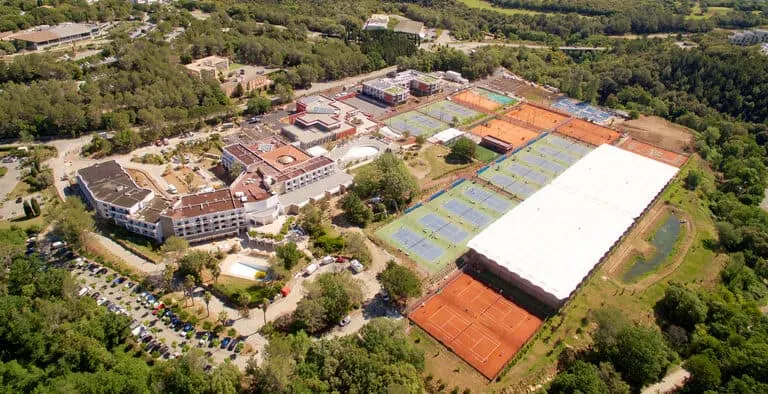
Some players prefer clay, some hard courts, some grass, but from an objective standpoint, which is the best surface for tennis?
In this article, I will look at the pros and cons of various tennis court surfaces, particularly in terms of the speed of the court, how the balls bounce and how it can affect your playing ability.
What Are Tennis Grass Courts?
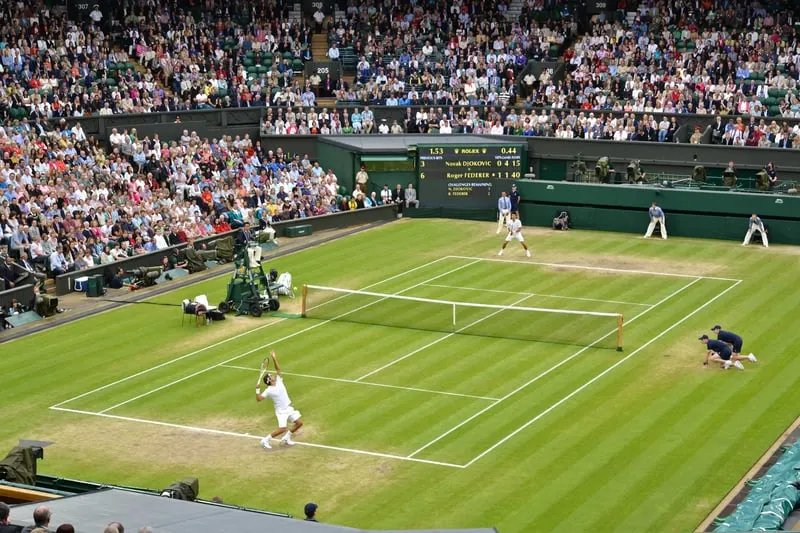
Grass courts are the original type of tennis courts.
While they are very beautiful to see and to play on, there aren’t a lot of these courts left in the world due to how expensive they are to maintain and build.
While they are costly, grass courts are often used in pro tournaments.
Wimbledon is one of the most prestigious tournaments throughout the world that uses this type of surface.
Pros
One main benefit of this type of court is that grass is soft and makes it easier on the player’s legs.
Fresh green grass courts allow the ball to bounce consistently but players need to understand that they will be dealing with a ball that hits the racquet harder than normal.
Cons
One con of grass tennis courts is that balls on the court will bounce incredibly low and this can take some time to get used to, especially if you have only ever played on other courts before.
This low bounce means that players need to make sure to keep their knees bent during the game so that they can manage to return these low balls.
The increased speed from the ball produces more shock on the racquet and this will only get worse as the court is worn.
Worn grass tennis courts also end up with more erratic hits and bounces. As the balls become more unpredictable, players must rely on a little luck to return them.
Finally, grass courts are slippery and can be unsafe when they are wet.
What Are Clay Courts?
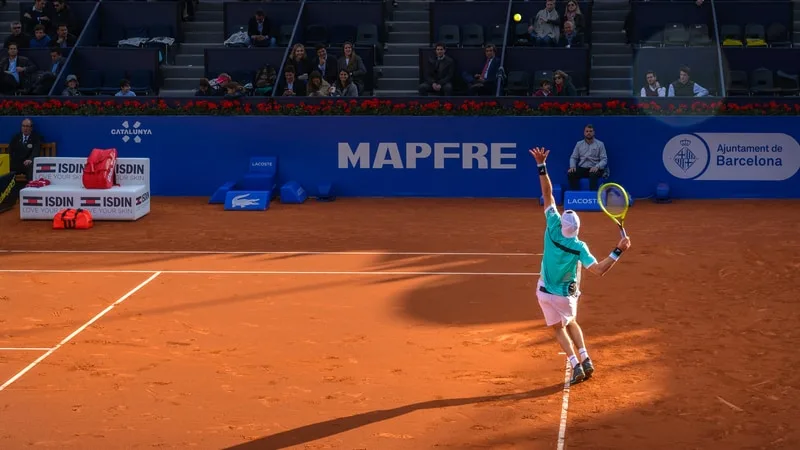
Clay tennis courts are often considered to be a premium type of court. Roland Garros in France is the most famous tennis tournament in the world which uses clay courts.
Pros
Tennis players won’t suffer as much stress on their joints when playing on clay courts.
Additionally, these courts result in slower play, which allows players more time to reach the ball.
Since the clay slows the ball a little, it also results in less stress being transferred through the racquet to the player’s arm when he or she hits the ball.
While keeping a clay court watered can be difficult in some areas, this surface remains cooler under the full sun and is safe to play on during light rains.
Cons
Unfortunately, when a ball hits a line on the court, it can result in a strong jolt to the player’s arm and may contribute to tennis elbow and other injuries.
Additionally, clay courts tend to be slippery and it is difficult for players to quickly change direction without straining the joints in their legs and knees.
Another con of playing on clay courts is that the ball’s bounce height can vary widely depending on the weather. Dry, hot clay will cause the ball to bounce high; on cold or wet clay, the ball will bounce much lower.
Clay courts also require a lot of upkeep in order to look their best and to provide a smooth play surface.
What is A Tennis Hard Court?
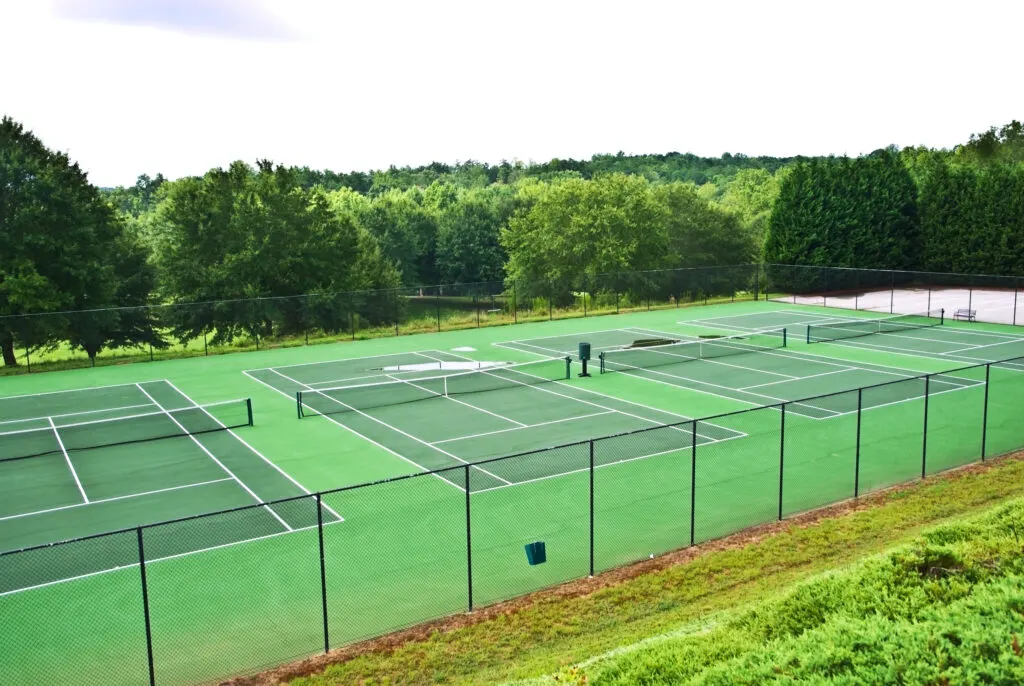
Most courts in the United States are hard tennis courts that are made from a concrete or asphalt base that is then coated with a variety of different materials.
Additionally, these courts are the most common type used during the Professional Tennis Tour.
Players need to be aware of how the hard court will play so that they can have the best results during their game.
Some hard courts have a high bounce that is great for topspin players while others have a lower bounce that makes the ball skid.
Pros
Hard courts are great for players who have big forehands and big serves and offer fast speed for the balls.
Another great benefit of hard courts is that they aren’t slippery, which means that players aren’t going to be as likely to fall or slide during the game.
They also tend to dry quickly so that players can play again right after a storm.
Cons
Unfortunately, hard courts are very hard on the joints. It’s common for tennis players to suffer from knee problems due to playing on this hard surface.
Since the game is quicker on hard courts, players must be able to react and move quickly in order to have a great game.
What Are Tennis Carpet Courts?
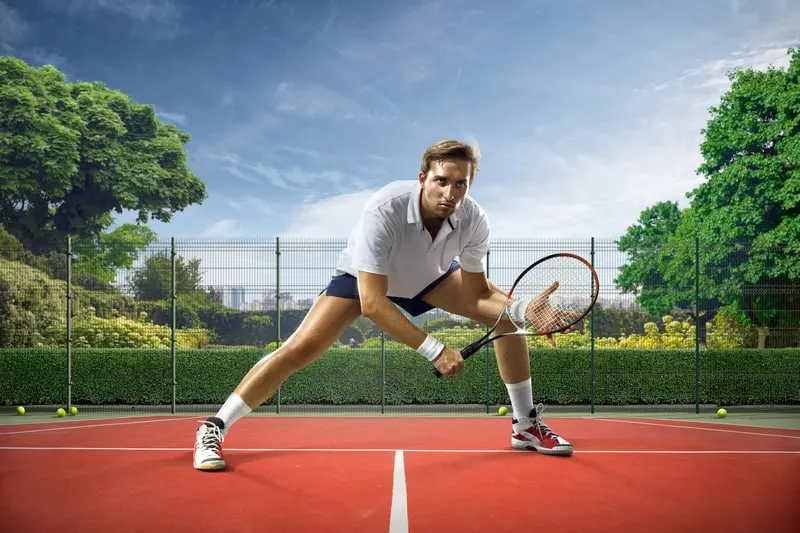
These courts are generally used in indoor locations for players to enjoy the sport during the winter.
While it’s a great option for indoor games, it’s not a very popular surface.
They aren’t currently used in any major tournaments or circuits.
Some carpet courts are outside and consist of turf that is infilled using sand.
Pros
Surprisingly, carpet courts are faster than hard courts are favour players who have a lot of power.
They are much less expensive and easier to maintain than grass courts.
Cons
Balls hit on carpet courts tend to have a very low bounce, which can be hard on the knees of players as they must stay lower to the ground in order to play.
While they are not nearly as slick or slippery as other types of courts, falling on a carpet court can hurt.
Players also need to be aware of the condition of their knees when playing on this surface.
Conclusion
As you can see, the type of court you play on will have a huge role in how the ball bounces, the power, and speed that you have, and what type of game you can expect.
To improve your overall game, it makes sense to try playing on all these types of surfaces. But in reality, this is hard for many players to experience.
